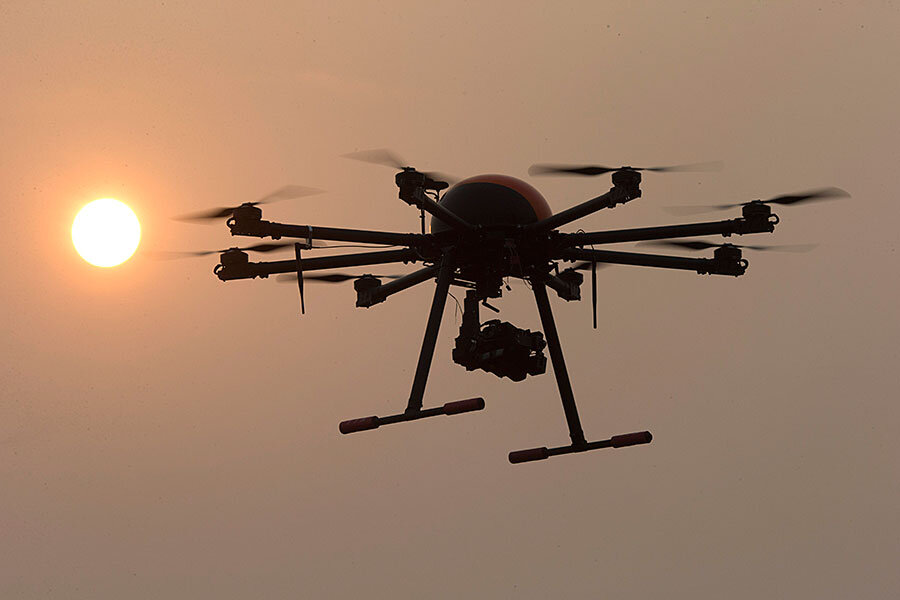If you get lost in the woods, could a drone come to your rescue?
Loading...
New research publicized Wednesday outlines a fresh application of drone technology: hunting down intrepid wilderness explorers who take a wrong turn.
The work, published in IEEE Robotics and Automation Letters, took drones down a road they had never yet been down, training them to pick out and pursue trails in the forest.
Scientists involved in the project hope the technology will eventually provide vital assistance to search and rescue teams, although there are skeptics who worry it may provide yet one more weapon in the arsenal of Big Brother.
“Our main motivation was to see how far we could go in solving a problem that’s very difficult, even for humans,” says lead author of the study, Alessandro Giusti of the Dalle Molle Institute for Artificial Intelligence, Switzerland, in a telephone interview with The Christian Science Monitor.
“But we also wanted to create something useful, and there’s a need for this kind of help for rescuers, especially in Switzerland, where there are so many forests and mountainous areas.”
The team, which worked in collaboration with colleagues from the University of Zurich, has expertise in what Dr. Giusti calls “machine learning”: they write algorithms that, rather than solving problems themselves, actually enable a machine to learn and thereby find solutions for itself.
Over the past few years, says Giusti, algorithms that have been set the task of solving particularly complex problems – detecting spam email or Facebook’s facial recognition software, for example – have all been based on machine learning.
“In order to gather enough data to 'train' their algorithms, the team hiked several hours along different trails in the Swiss Alps and took more than 20 thousand images of trails using cameras attached to a helmet,” reads the University of Zurich’s press release.
And with all this data, the algorithm did well: it picked the correct pathway 85 percent of the time. Humans had a success rate of 82 percent.
This project represents the first time drones have been taught to find and follow trails, says Giusti. The researchers focused solely on that facet of the problem, making no effort to address obstacle avoidance, as the University of Zurich has already developed powerful algorithms in that regard.
But, as useful as this technology may prove to be, there are those who worry about its potential applications, perhaps in the hands of a nanny state, or worse.
“Well, we are developing a technology with the best intentions,” Giusti tells the Monitor. “We cannot exclude that it will be used for bad things in the future, but the same is true for most of the recent advances in robotics and information technology (and in science in general). It's up to every one of us as a society to make sure that these new technologies actually help humanity.”
So, when can we hope to see these drones in action? When, as we wander aimlessly in the vastness of a wild wilderness, can we expect a robot to ride to our rescue?
“We still need to to do lots of research and development,” says Giusti, “so it’ll be several years, but it is realistic to think this will actually happen.”






